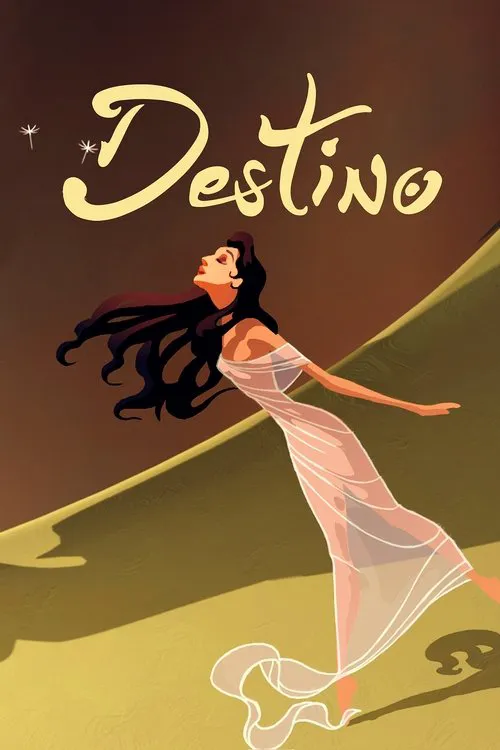Destino

Plot
Destino, a short film created by Walt Disney and Salvador Dali, is a mesmerizing visual feast that weaves together the threads of love, loss, and the cyclical nature of fate. The film is set to the haunting melody of "Destino," a beautiful and timeless song written by Armand Rossi in 1946. On the surface, Destino appears to be an enigmatic tale of a woman's journey, but upon closer inspection, it reveals itself to be a complex exploration of the human experience, where reality blurs and surreality reigns supreme. The film begins with a tender scene of a woman and her lover embracing, their faces bathed in the warm glow of a moonlit sky. Their love is idyllic, but like all things, it is fragile and ephemeral. As they dance under the stars, the lover's face begins to melt away, a stark reminder of the transience of love and the passage of time. The woman, however, is a resilient and resourceful spirit, and she responds to her lover's transformation by undergoing a series of surreal metamorphoses. As she gazes out at the world around her, she becomes a dandelion, her delicate petals swaying gently in the breeze. This is no ordinary dandelion, however, for it is imbued with a sense of agency and self-awareness, and it begins to explore the world around it with a sense of wonder and curiosity. As the dandelion navigates the landscape, it encounters a group of ants that emerge from the hand of a faceless figure. At first, the ants appear to be nothing more than a swarm of insignificant insects, but as they begin to move and behave in a coordinated manner, they reveal themselves to be Frenchmen, clad in berets and striped shirts, riding bicycles through a picturesque countryside. This juxtaposition of scale and perspective is a hallmark of the surrealist movement, and it serves to underscore the idea that reality is a fluid and malleable concept. The ants-turned-Frenchmen are only one of many bizarre and fantastical creatures that inhabit the world of Destino. Turtles with faces on their backs collide and merge to form a breathtaking ballerina, her tutu shimmering and swirling as she dances across the screen. A group of insects gather to play a surreal game of baseball, their movements and interactions choreographed to the gentle rhythm of the music. As the film progresses, the woman's journey becomes increasingly dreamlike, a series of vignettes and tableaux that blur and merge into one another. She becomes a flower, a clock, and a tree, each transformation evoking a different mood and atmosphere. The lover, meanwhile, is reduced to a fleeting memory, a momentary glimpse of a face that is quickly erased by the passage of time. Through it all, the music remains a constant, a haunting melody that underscores the themes of love, loss, and redemption that run throughout the film. "Destino" is a song of longing and yearning, a lament for the transience of human experience. The song is often characterized as a "tango," but it is more accurately described as a "melancholy serenade," its lush harmonies and sweeping melodies capturing the bittersweet flavor of love and memory. Ultimately, Destino is a film about the cyclical nature of fate, where love and loss are intertwined in a perpetual cycle of birth, growth, and decay. The woman's journey is a metaphor for the human experience, a testament to the resilience and adaptability of the human spirit. Despite the passage of time, despite the losses and sorrows that we all endure, we are all bound together by our shared experiences, our shared emotions, and our shared longing for connection and meaning in the world around us. In its own unique and inimitable way, Destino captures the essence of these themes, distilling them into a beautiful and timeless cinematic poem that is both a tribute to the enduring power of love and a celebration of the boundless potential of the human imagination.
Reviews
Recommendations




